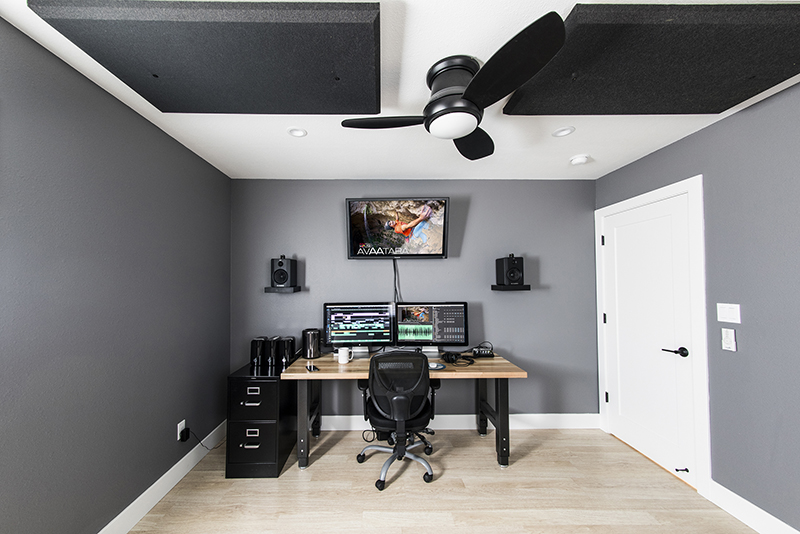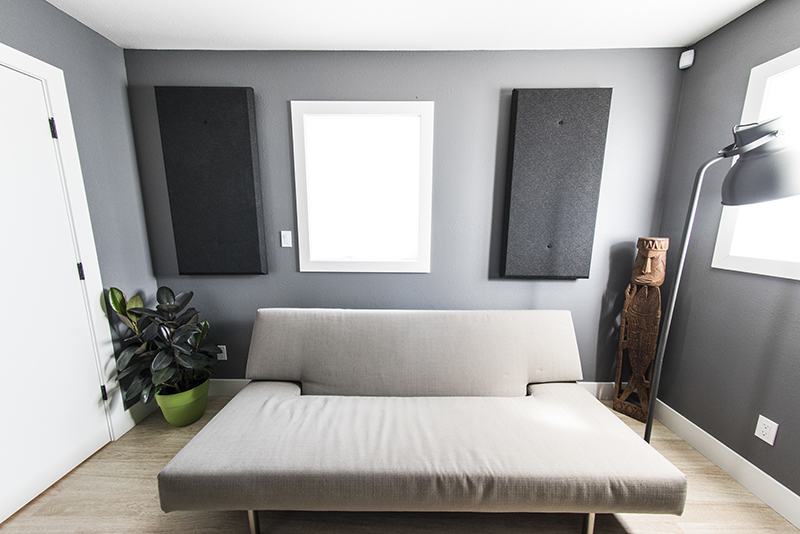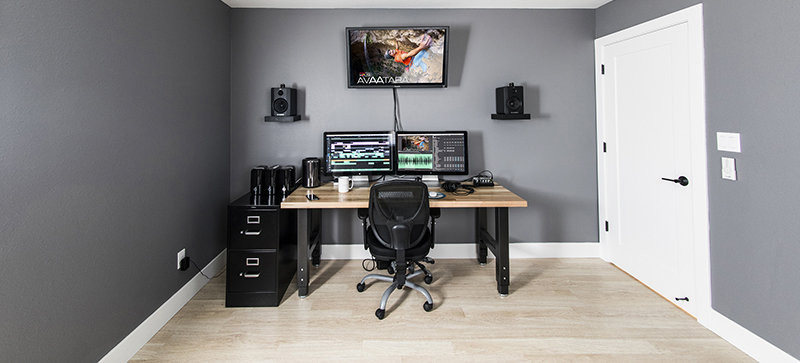
Hiya Corey!
When you work with clients on video projects, what does the edit process look like? Do you have any tips for making this process go smoother? Thanks, and I’m a big fan of your work!
Best, John
Like many others, my first experiences editing video involved sitting hunched over a laptop, fumbling with the editing tools, and going crosseyed from too many hours in front of the screen.
Eventually, that laptop was swapped out for a tower with a large monitor, though the long nights in front of a screen continued, this time with a buddy who had more experience using the editing tools than me.
Today, I’ve come to realize that one of the keys to success in making it through a video edit—especially with a client—is getting a proper set up of monitors and making the room as comfortable as possible so no one gets too cross-eyed (or cross).
In our edit suite in South Lake Tahoe, we frequently have situations where there is one editor, and two or three collaborators and/or clients sitting behind the editor, providing real-time feedback. For this to be successful, we need good fengshui. Here are some tips:
Happy Editor
The edit process won’t flow with vital qi unless the editor is aligned and happy. Usually, this is simply just a matter of setting up a station with a comfortable chair, and two monitors. In our case, we have an executive office chair, and two Apple cinema displays, which allows the editor as much screen space as needed.

We often work with one editor, whose name I won’t mention (cough, Rex Lint!, cough), who insists that three Apple cinema monitors are a minimum. Since this person is so good at what he does, we are actually considering accommodating his extravagant demands.
Again, happy editor, happy edit.
Comfortable Client
A third viewing monitor for myself as the director, any other collaborators, and, of course, the client(s), is also key. Ideally the space is set up so that a bunch of people aren’t hovering over the editor’s shoulders, breathing down his neck. As you can see, we’ve elevated this third monitor, a Panasonic Plasma display, well over head.
As you can also see, we have a quintessential couch behind the desk from which this third monitor can be viewed. It also creates a comfortable hub for the clients, who can anchor themselves there and take notes, answer emails, or even just pretend to pay attention if they want. Keeping that separation of personal space is vital to creating great edit-suite fengshui.

Also, our Mac Pro is set up with external speakers and a little mixing board so everyone in the room can hear high-quality sound. There are also headphones for the editor, so when he needs to get in there and work on slicing the sound, everyone else in the room doesn’t need to hear that repeat cycle of sound being cut from the edit.
Functional Space
We have some sound panels on the walls and ceilings, so there’s less echo when listening to the audio. Also, we have black-out blinds on the windows so we can make the room really dark at any point, if we want. The walls are painted gray (not white), which helps us assess colors without any odd color reflections off the walls.
We have two windows, which are usually open and pumping in plenty of fresh air. Making sure everyone gets enough oxygen staves off that brain-dead feeling that can creep up after too many hours in front of the screen.
And as both a first and last result, we’ve got coffee and beer on tap 10 feet out the door. It’s good to keep these items outside of the edit suite, giving people an excuse to actually leave the room for a bit. Also, don’t think you can get away without these items. Coffee and beer are mission critical to the success of any edit.
To sum up, creating good edit-suite fengshui is all about making the editor happy, keeping the client comfortable, and making sure the space is functional so that the edit process goes as smoothly as possible.
